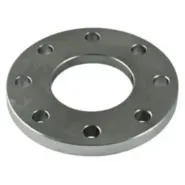-
Cangzhou Yulong Steel Co., Ltd.
-
Phone:
+86 13303177267 -
Email:
admin@ylsteelfittings.com
- English
- Arabic
- Italian
- Spanish
- Portuguese
- German
- kazakh
- Persian
- Greek
- French
- Russian
- Polish
- Thai
- Indonesian
- Vietnamese
- Zulu
- Korean
- Uzbek
- Hindi
- Serbian
- Malay
- Ukrainian
- Gujarati
- Haitian Creole
- hausa
- hawaiian
- Hebrew
- Miao
- Hungarian
- Icelandic
- igbo
- irish
- Japanese
- Javanese
- Kannada
- Khmer
- Rwandese
- Afrikaans
- Albanian
- Amharic
- Armenian
- Azerbaijani
- Basque
- Belarusian
- Bengali
- Bosnian
- Bulgarian
- Catalan
- Cebuano
- China
- China (Taiwan)
- Corsican
- Croatian
- Czech
- Danish
- Esperanto
- Estonian
- Finnish
- Frisian
- Galician
- Georgian
- Kurdish
- Kyrgyz
- Lao
- Latin
- Latvian
- Lithuanian
- Luxembourgish
- Macedonian
- Malgashi
- Malayalam
- Maltese
- Maori
- Marathi
- Mongolian
- Myanmar
- Nepali
- Norwegian
- Norwegian
- Occitan
- Pashto
- Dutch
- Punjabi
- Romanian
- Samoan
- Scottish Gaelic
- Sesotho
- Shona
- Sindhi
- Sinhala
- Slovak
- Slovenian
- Somali
- Sundanese
- Swahili
- Swedish
- Tagalog
- Tajik
- Tamil
- Tatar
- Telugu
- Turkish
- Turkmen
- Urdu
- Uighur
- Welsh
- Bantu
- Yiddish
- Yoruba

Nov . 29, 2024 13:57 Back to list
Welding Techniques for Pipe to Plate Connections in Industrial Applications
Pipe to Plate Weld A Comprehensive Overview
Pipe to plate welds are a fundamental aspect of construction and manufacturing, particularly within industries such as oil and gas, power generation, and construction. This welding technique involves joining a cylindrical pipe to a flat plate, creating robust connections that can withstand significant mechanical stresses and environmental conditions. Understanding the intricacies of pipe to plate welding is essential for engineers, welders, and project managers alike.
Understanding the Process
The pipe to plate welding process typically begins with precise preparation of the mating surfaces. This includes cleaning the edges to remove any contaminants, rust, or scale. Proper surface preparation is critical; it ensures a strong and clean weld joint, which is vital for structural integrity.
Once the surfaces are prepared, the alignment of the pipe and plate is crucial. They must be positioned correctly to ensure an even distribution of stress across the welded joint. Misalignment can lead to weak spots that can compromise the entire structure. Various techniques, such as the use of welding clamps or fixtures, can help maintain the alignment during the welding process.
Welding Techniques
Several welding techniques can be employed for pipe to plate welds, including Shielded Metal Arc Welding (SMAW), Gas Metal Arc Welding (GMAW), and Submerged Arc Welding (SAW). Each method has its advantages and disadvantages, depending on factors such as material type, thickness, and environmental conditions.
1. Shielded Metal Arc Welding (SMAW) Often employed for its versatility, SMAW is suitable for a variety of materials and positions. It is a manual process, allowing for good control and flexibility but may require skilled operators.
pipe to plate weld

2. Gas Metal Arc Welding (GMAW) Known for its speed and efficiency, GMAW is often used for thicker materials and offers a cleaner process due to its minimal slag production. However, it requires more expensive equipment and is less adaptable to outdoor conditions compared to SMAW.
3. Submerged Arc Welding (SAW) This method is typically used for high-volume production as it can achieve high deposition rates. It is highly efficient and provides deep penetration, making it suitable for thick sections but is limited to specific positions and environments.
Quality Control and Inspection
Quality control in pipe to plate welding is critical to ensure the durability of the weld. Various inspection methods, including visual inspection, ultrasonic testing, and radiographic testing, are employed to assess the quality of the weld. These inspections serve to identify defects such as cracks, porosity, and incomplete fusion, which could lead to potential failures in the future.
Additionally, adherence to standardized welding codes, such as those set forth by the American Welding Society (AWS) or the American Society of Mechanical Engineers (ASME), is paramount. These codes provide guidelines and requirements that ensure the safety and reliability of welded joints in various applications.
Conclusion
In summary, pipe to plate welding is an essential process in many industries, requiring careful attention to detail and adherence to best practices. The selection of the appropriate welding technique, thorough preparation, and rigorous quality control are all vital components that determine the success of the welded joint. As industries continue to evolve and demand more complex joint configurations, the importance of mastering pipe to plate welding will remain critical for professionals in the field. Understanding these elements not only enhances the safety and reliability of structures but also contributes to the overall efficiency of manufacturing processes.
Latest news
-
ANSI 150P SS304 SO FLANGE
NewsFeb.14,2025
-
ASTM A333GR6 STEEL PIPE
NewsJan.20,2025
-
ANSI B16.5 WELDING NECK FLANGE
NewsJan.15,2026
-
ANSI B16.5 SLIP-ON FLANGE
NewsApr.19,2024
-
SABS 1123 FLANGE
NewsJan.15,2025
-
DIN86044 PLATE FLANGE
NewsApr.19,2024
-
DIN2527 BLIND FLANGE
NewsApr.12,2024
-
JIS B2311 Butt-Welding Fittings LR/SR 45°/90° /180°Seamless/Weld
NewsApr.23,2024











